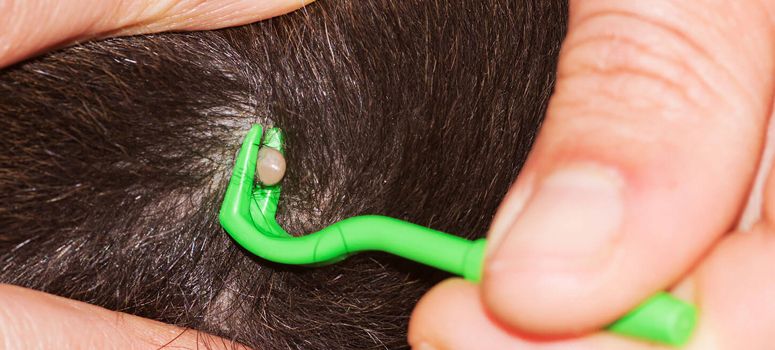
When suffering from the unpleasant tick bite, Many patients react in the worst way, trying to pull out the arachnid as quickly as possible without using the appropriate means.
This "technique" is not recommended because it can lead to problems such as the TICK'S MOUTH under the dermis. What is also not recommended under any circumstances is to use methods such as petroleum jelly, olive oil or matchstick, as this will only cause the tick to sink deeper into the skin.
The following is an explanation of what is involved in the Tick Twisterwhich is a device that provides us with the best form of remove all ticks. Using Tick Twister we get rid of them quickly and safely and, in effect, it is a way of avoiding any tick-associated infections such as tick-borne diseases. Lyme disease.
The video below explains Tick Twister in detail.
Advantages of the Tick Twister when removing ticks
The Tick Twister is available in three sizes, for large ticks, medium-sized ticks or nymphs, and can be used for both human and pet bites.
The method is very simple, and the video explains in a simple way how the instrument's tweezers separate the tick from the skin after a slight rotation.
What sets Tick Twister apart from other outdated methods focuses on three aspects.
- Firstly, it does not leave parts of the tick under the dermis.
- On the other hand, it does not compress the tick's abdomen, preventing the inoculation of toxic substances from the arachnid into the bloodstream.
- Finally, it is completely painless...
What we recommend from the medical community is that anyone who goes for walks in the countryside or in risky areas should have an Tick Twister pack in the backpack or in the car, to eliminate ticks instantly, thus preventing pathologies such as tick-borne diseases. Lyme disease.
It is very important to Lyme disease prevention and so you need to act quickly. It is important to keep an eye on the area of the bite during the following weeks because one of the most common symptoms of Lyme is the appearance of spots on the affected area, as a result of infection caused by the bacterium borrelia.

